Last week I attended a tasting in Manhattan featuring the wines of Alto Adige. This region sits in the Italian Alps. Both red and white varieties are grown with white taking the lead at 55% of planted acreage. This two-part tasting included a walk around portion that featured tons of exciting new releases from a host of producers. Both red and white wines were showcased. That was the second part of the day; I’m going to focus on the first part. That initial piece was a 90 minute, sit-down seminar during which eight white wines were presented. The mission statement of the seminar was to illustrate the overall age-ability of white wines from Alto Adige. There are few regions in the world that produce white wines with the ability or intent of aging. The ones that have that capability however can often be transcendent. I was pretty curious to see how these wines would taste and if they really did have the as advertised potential for above average longevity. What follows are some brief thoughts about each of the eight wines we tasted.
 Nals Margreid 2007 Pinot Grigio Punggl DOC Alto Adige. This single vineyard wine is 100% Pinot Grigio. Half of the grapes for this wine were fermented and aged in large oak barrels, the other half in stainless steel tanks. At release this wine had a suggested retail price of $24. The 2009 is the current vintage of this particular wine. The 2007 features lots of yellow fruit flavors throughout a round and sweet but well balanced palate. It shows off the juicy flavors that are prevalent with relatively small production Pinot Grigio treated with care; as opposed to the vast array of anonymous Pinot Grigio that hits US shelves by the boatload.
Nals Margreid 2007 Pinot Grigio Punggl DOC Alto Adige. This single vineyard wine is 100% Pinot Grigio. Half of the grapes for this wine were fermented and aged in large oak barrels, the other half in stainless steel tanks. At release this wine had a suggested retail price of $24. The 2009 is the current vintage of this particular wine. The 2007 features lots of yellow fruit flavors throughout a round and sweet but well balanced palate. It shows off the juicy flavors that are prevalent with relatively small production Pinot Grigio treated with care; as opposed to the vast array of anonymous Pinot Grigio that hits US shelves by the boatload.
Franz Haas 2004 Cuvee Manna. This wine is a blend of Riesling, Chardonnay, Traminer Aromatico and Sauvignon Blanc. The fruit was sourced from four vineyards at altitudes of 350 to 850 meters. Each lot was picked and fermented separately. The Chardonnay and Sauvignon Blanc saw time in Barrique while the Riesling and Traminer Aromatico were fermented in steel. The blend was assembled at final fermentation and spent 10 months on yeasts prior to bottling. 50,000 bottles of this wine were made and at release it had a retail price of $40. The stated goal of this wine is the ability to pair with as wide an array of foods as possible. Apricots, and white cling peach characteristics are dominant on this wine which is driven by intense, fresh fruit flavors. There is a bit of honey on the finish. Ultimately this offering is layered with loads of complexity. For me this was one of the most interesting wines of the day.
San Michele Appiano 2006 Pinot Grigio Sanct Valentin DOC Alto Adige. This wine was sourced from vines with 25-40 years of age on them. The vineyards selected sit approximately 450 meters above sea level. This wine was aged in a combination of new (40%) and used (60%) barriques. This offering spent 11 months on yeast. At release this wine had a suggested retail price of $35.99. Lilac, peach and a hint of petrol are all present in the nose of this wine. Apricots are prominent on the palate along with spices that carry through the finish along with minerals. This wine has terrific concentration of fruit and persistent, lingering and rather impressive length.
Caldro Castell Giovanelli 2007 Sauvignon DOC Alto Adige. The vines the fruit for this selection were sourced from average 5-10 years of age. This offering is 100% Sauvignon Blanc. Fermentation and aging took place in oak casks. At release this wine had a suggested retail price of $48. This wine is incredibly aromatic with citrus and melon fruit just exploding from the nose. The palate shows continued citrus in droves. Minerals are the story on the crisp, clean finish. This wine has racy, slightly zingy acidity.
Terlan Nova Domus 2005 Terlaner Riserva DOC Alto Adige. This wine is a blend of Pinot Blanc (60%), Chardonnay (30%), and Sauvignon Blanc (10%). The fruit was sourced from vineyards sitting between 350 and 500 meters above sea level. Fermentation took place in large oak casks (50%) and 500 Liter Tonneaux. The wine spent a year on the yeast. At release this offering had a suggested retail price of $55. Citrus and spice notes are both prominent on the finish of this wine. Stone fruits dominate the palate. The finish of this selection just goes on and on. For a 5 + year old white blend the fruit on this wine is incredibly fresh and vital. It just keeps beckoning you back for more.
Alois Lageder 2002 Chardonnay Lowengang DOC Alto Adige. The fruit for this wine was selected from vines with 40 to 60 years of age on them grown at vineyard sites sitting 260-450 meters above sea level. This was fermented using native yeasts. It was aged in a combination of new (50%) and used (50%) barriques. At release this wine had a suggested retail price of 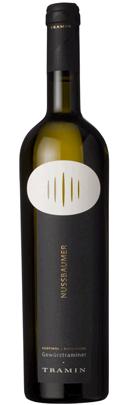 $40. Apple, limestone and minerals are all present on this wine. Its overall style in many ways brings to mind aged Burgundy. The purity of fruit and length of finish are both impressive.
$40. Apple, limestone and minerals are all present on this wine. Its overall style in many ways brings to mind aged Burgundy. The purity of fruit and length of finish are both impressive.
Peter Zemmer 2006 Gewürztraminer Reserve DOC Alto Adige. This wine is 100% Gewürztraminer, Fermentation took place with pure strains of yeast in temperature controlled tanks. At release this wine had a suggested retail price of $29. This wine is gloriously aromatic with spice and dried fruit and flower aromas emerging from the glass in droves. The palate of this wine is rich and layered with flavor; it's also impeccably balanced and incredibly in focus. The finish has prodigious length that features a particularly impressive spice component.
Tramin 2004 Gewürztraminer Nussbaumer DOC Alto Adige. The Nussbaumer Estate Vineyards sit between 350 and 500 meters above sea level. This wine is 100% Gewürztraminer. Fruit for this wine was hand picked. Fermentation took place in temperature controlled stainless steel tanks. At release this wine had a suggested retail price of $35. Nectarine, lychee and hazelnuts fill the nose of this wine. Through the palate apricot and both white and yellow peach flavors are present in droves. This wine has a rich, layered and honeyed finish that lingers persistently. This wine has incredibly appealing flavors and you’ll be hard pressed to stop drinking this once you start.
The bottom line is that each of these selections was impressive in its own right. Taken as a group they were an impressive lineup that achieved the mission statement of showcasing the eminent age worthiness of well made white wines from the Alto Adige region of Italy. Each of them was drinking well and featured fresh flavors that belied their ages. As a group they also had more life ahead of them. Given the complexity, drinkability and obvious longevity these particular wines as well as the current vintages are well worth your time, effort and money.
 One of the great things about Malbec is that you can often get a reasonable example of it for a pretty decent price. Like everything else though there are also Malbecs at higher than entry level price points. In fact these days a good wine shop stocks Malbecs at almost any conceivable price. Today I’m going to look at a single vineyard effort that falls into the super premium category.
The Trapiche 2007 Icons Malbec Vina Adolfo Ahumada is a single vineyard effort. All of the fruit for this wine was sourced at the La Patria vineyard. These vines sit close to 1,100 meters above sea level in the Mendoza region of Argentina. This offering is 100% Malbec. This wine was aged over 18 months in French oak. It has a suggested retail price of $55.
One of the great things about Malbec is that you can often get a reasonable example of it for a pretty decent price. Like everything else though there are also Malbecs at higher than entry level price points. In fact these days a good wine shop stocks Malbecs at almost any conceivable price. Today I’m going to look at a single vineyard effort that falls into the super premium category.
The Trapiche 2007 Icons Malbec Vina Adolfo Ahumada is a single vineyard effort. All of the fruit for this wine was sourced at the La Patria vineyard. These vines sit close to 1,100 meters above sea level in the Mendoza region of Argentina. This offering is 100% Malbec. This wine was aged over 18 months in French oak. It has a suggested retail price of $55.

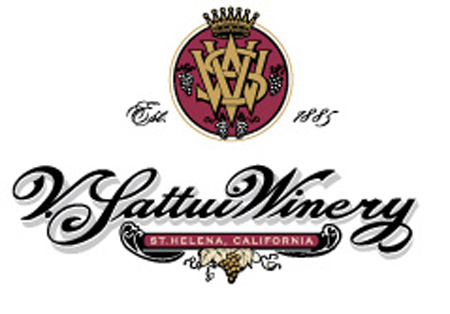 There are a handful of varietals that I find too intriguing to ever turn down. Petite Sirah and Charbono are two, the third is Cabernet Franc. What they have in common I suppose aside from being red of course, is varying degrees of scarcity. If you go from tasting room to tasting room in Napa as one example you’ll find lots of Cabernet Sauvignon. However you’ll be able to count the number of times you run across these varietals in a day on one hand. That’s only part of the story though. Lots of other varieties are even harder to come by and I don’t chase them to the ends of the earth. These wines each has something that makes them both unique and interesting in many cases. So when someone offers me a taste, it doesn’t matter when or where, I nod my head and say, “yes please.” Today I’ll look at a Cabernet Franc from Napa Valley producer
There are a handful of varietals that I find too intriguing to ever turn down. Petite Sirah and Charbono are two, the third is Cabernet Franc. What they have in common I suppose aside from being red of course, is varying degrees of scarcity. If you go from tasting room to tasting room in Napa as one example you’ll find lots of Cabernet Sauvignon. However you’ll be able to count the number of times you run across these varietals in a day on one hand. That’s only part of the story though. Lots of other varieties are even harder to come by and I don’t chase them to the ends of the earth. These wines each has something that makes them both unique and interesting in many cases. So when someone offers me a taste, it doesn’t matter when or where, I nod my head and say, “yes please.” Today I’ll look at a Cabernet Franc from Napa Valley producer  Nero d’Avola isn’t one of those grapes that you hear people talking about a lot. Certainly it isn’t discussed the way people do Cabernet Sauvignon, Sangiovese or Pinot Noir to name a few. And I suppose there are numerous reasons for that. That said this southern Italian grape should get a bit more attention than it does. The wines it produces are often good values that work well with everyday foods. Today I’ll look at one from the 2009 vintage.
The Vino dei Fratelli 2009 Nero d’Avola was produced using fruit sourced in Sicily. This wine is 100% varietal. 5,000 cases of this offering were produced and it has a suggested retail price of $15.99.
Nero d’Avola isn’t one of those grapes that you hear people talking about a lot. Certainly it isn’t discussed the way people do Cabernet Sauvignon, Sangiovese or Pinot Noir to name a few. And I suppose there are numerous reasons for that. That said this southern Italian grape should get a bit more attention than it does. The wines it produces are often good values that work well with everyday foods. Today I’ll look at one from the 2009 vintage.
The Vino dei Fratelli 2009 Nero d’Avola was produced using fruit sourced in Sicily. This wine is 100% varietal. 5,000 cases of this offering were produced and it has a suggested retail price of $15.99. Nals Margreid 2007 Pinot Grigio Punggl DOC Alto Adige. This single vineyard wine is 100% Pinot Grigio. Half of the grapes for this wine were fermented and aged in large oak barrels, the other half in stainless steel tanks. At release this wine had a suggested retail price of $24. The 2009 is the current vintage of this particular wine. The 2007 features lots of yellow fruit flavors throughout a round and sweet but well balanced palate. It shows off the juicy flavors that are prevalent with relatively small production Pinot Grigio treated with care; as opposed to the vast array of anonymous Pinot Grigio that hits US shelves by the boatload.
Nals Margreid 2007 Pinot Grigio Punggl DOC Alto Adige. This single vineyard wine is 100% Pinot Grigio. Half of the grapes for this wine were fermented and aged in large oak barrels, the other half in stainless steel tanks. At release this wine had a suggested retail price of $24. The 2009 is the current vintage of this particular wine. The 2007 features lots of yellow fruit flavors throughout a round and sweet but well balanced palate. It shows off the juicy flavors that are prevalent with relatively small production Pinot Grigio treated with care; as opposed to the vast array of anonymous Pinot Grigio that hits US shelves by the boatload. $40. Apple, limestone and minerals are all present on this wine. Its overall style in many ways brings to mind aged Burgundy. The purity of fruit and length of finish are both impressive.
$40. Apple, limestone and minerals are all present on this wine. Its overall style in many ways brings to mind aged Burgundy. The purity of fruit and length of finish are both impressive. 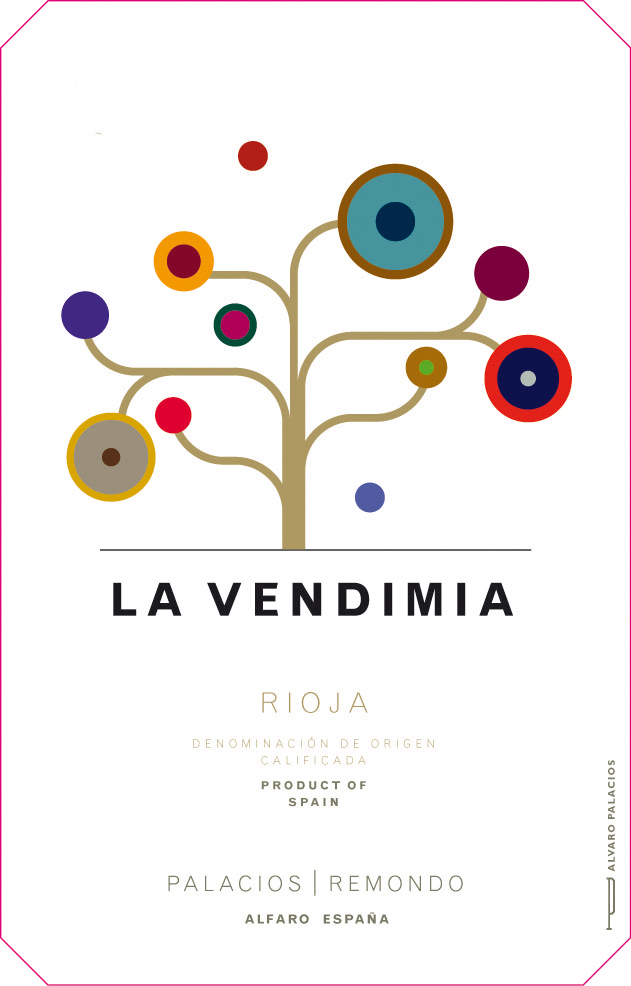 The two red grape varietals that dominate the landscape both figuratively and somewhat literally in Spain are Tempranillo and Garnacha. Often times one or the other dominates either a blend or is bottled as a single variety with small percentages of other grapes. Today I’ll look at a blend where the two key red varietals from Spain play equal roles.
The Palacios Remondo 2009 La Vendimia D.O.C. Rioja was produced using fruit sourced at estate vineyards. These vines which sit at 1,800 feet above sea level have been organically farmed since 2003. This wine is a 50/50 blend of Garnacha and Tempranillo. The fruit was hand-picked and sorted. Fermentation took place in stainless steel tanks. Barrel aging took place over 5 months in a combination of used French (80%) and American (20%) oak. This offering has a suggested retail price of $14.99.
The two red grape varietals that dominate the landscape both figuratively and somewhat literally in Spain are Tempranillo and Garnacha. Often times one or the other dominates either a blend or is bottled as a single variety with small percentages of other grapes. Today I’ll look at a blend where the two key red varietals from Spain play equal roles.
The Palacios Remondo 2009 La Vendimia D.O.C. Rioja was produced using fruit sourced at estate vineyards. These vines which sit at 1,800 feet above sea level have been organically farmed since 2003. This wine is a 50/50 blend of Garnacha and Tempranillo. The fruit was hand-picked and sorted. Fermentation took place in stainless steel tanks. Barrel aging took place over 5 months in a combination of used French (80%) and American (20%) oak. This offering has a suggested retail price of $14.99. Syrah is one of those varieties that belong to the world. What I mean is that it flourishes in quite a few places and the expression of it can be wildly different and yet quite valid. Syrah gown in California, France and Australia often has very little in common, flavor profile wise. Italy isn’t the first, or even the second place I think of when this grape comes to mind, but there are some pretty interesting examples of this varietal emerging from there. Today I’ll look at a release from Antinori, one of the classic Italian producers.
The Antinori Agricola Bramasole La Braccesca 2006 Syrah Cortona DOC was produced using fruit sourced at La Braccesca estate vineyards. This offering is 100% Syrah. After fermentation it was aged in new barrique for 14 months followed by 12 months of bottle aging prior to release. This wine has a suggested retail price of around $44 but is
Syrah is one of those varieties that belong to the world. What I mean is that it flourishes in quite a few places and the expression of it can be wildly different and yet quite valid. Syrah gown in California, France and Australia often has very little in common, flavor profile wise. Italy isn’t the first, or even the second place I think of when this grape comes to mind, but there are some pretty interesting examples of this varietal emerging from there. Today I’ll look at a release from Antinori, one of the classic Italian producers.
The Antinori Agricola Bramasole La Braccesca 2006 Syrah Cortona DOC was produced using fruit sourced at La Braccesca estate vineyards. This offering is 100% Syrah. After fermentation it was aged in new barrique for 14 months followed by 12 months of bottle aging prior to release. This wine has a suggested retail price of around $44 but is  In the early 90’s when I first started visiting Napa Valley a handful of producers were of specific interest to me. I’d visit them time and again because they had one or more wines that I enjoyed regularly and I was also always eager to taste smaller production things that I couldn’t get on my shelf back home. Franciscan Estate was one of those producers. Their Cabernet Sauvignon, Merlot and Chardonnay were the three wines I drank with the most regularity, but I really enjoyed the majority of their portfolio quite a bit. As happens from time to time they slipped off my radar a bit of late. The number of wines out there are practically dizzying in number, making it difficult to always go back and revisit. So when current releases of Chardonnay and Sauvignon Blanc from Franciscan landed on my desk recently it felt like it does when an old friend you haven’t seen in awhile calls or rings your doorbell, or these days, pokes you on Facebook. Regardless of how they reach out, the reaction is usually the same you want to know how they’re doing. And that was exactly what I was wondering about
In the early 90’s when I first started visiting Napa Valley a handful of producers were of specific interest to me. I’d visit them time and again because they had one or more wines that I enjoyed regularly and I was also always eager to taste smaller production things that I couldn’t get on my shelf back home. Franciscan Estate was one of those producers. Their Cabernet Sauvignon, Merlot and Chardonnay were the three wines I drank with the most regularity, but I really enjoyed the majority of their portfolio quite a bit. As happens from time to time they slipped off my radar a bit of late. The number of wines out there are practically dizzying in number, making it difficult to always go back and revisit. So when current releases of Chardonnay and Sauvignon Blanc from Franciscan landed on my desk recently it felt like it does when an old friend you haven’t seen in awhile calls or rings your doorbell, or these days, pokes you on Facebook. Regardless of how they reach out, the reaction is usually the same you want to know how they’re doing. And that was exactly what I was wondering about 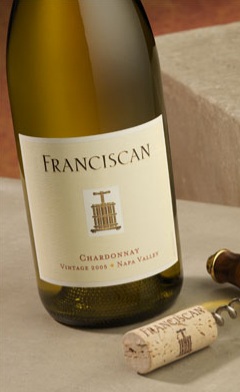 The Franciscan Estate 2009 Chardonnay was produced using fruit sourced in Carneros and southern Napa Valley. This wine is 100% Chardonnay. Fermentation took place in barrel followed by 7 months of aging in small French and American oak barrels; 20% of them were new. Just fewer than 59,000 cases of this wine were produced and it has a suggested retail price of $18.
The Franciscan Estate 2009 Chardonnay was produced using fruit sourced in Carneros and southern Napa Valley. This wine is 100% Chardonnay. Fermentation took place in barrel followed by 7 months of aging in small French and American oak barrels; 20% of them were new. Just fewer than 59,000 cases of this wine were produced and it has a suggested retail price of $18. The
The  I’ve been tasting through quite a few Malbecs lately and I’ll present some of the noteworthy ones here every week or so for a couple of months. Argentina’s Michael Torino Estate makes several tiers of wine. One of those tiers is Cuma. This word means clean and pure in Aymara a local language that predates the Inca’s. This range represents their organic offerings. Today I’ll look at the Malbec from that tier. In addition to Malbec they also produce a Cabernet Sauvignon and a Torrontes in that range.
The Michael Torino Estate 2010 Cuma Malbec was produced from grapes certified to be organic. The fruit was sourced in the Cafayate Valley region. This offering is 100% Malbec. This wine has a suggested retail price of $12.99.
I’ve been tasting through quite a few Malbecs lately and I’ll present some of the noteworthy ones here every week or so for a couple of months. Argentina’s Michael Torino Estate makes several tiers of wine. One of those tiers is Cuma. This word means clean and pure in Aymara a local language that predates the Inca’s. This range represents their organic offerings. Today I’ll look at the Malbec from that tier. In addition to Malbec they also produce a Cabernet Sauvignon and a Torrontes in that range.
The Michael Torino Estate 2010 Cuma Malbec was produced from grapes certified to be organic. The fruit was sourced in the Cafayate Valley region. This offering is 100% Malbec. This wine has a suggested retail price of $12.99.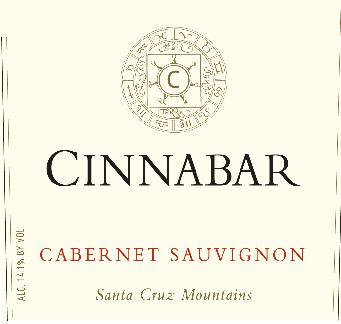 More and more over the last few years I’ve been impressed with wines from the Santa Cruz Mountains. I’ve taken a few looks at some wines from Cinnabar and the time has come to revisit them.
More and more over the last few years I’ve been impressed with wines from the Santa Cruz Mountains. I’ve taken a few looks at some wines from Cinnabar and the time has come to revisit them. 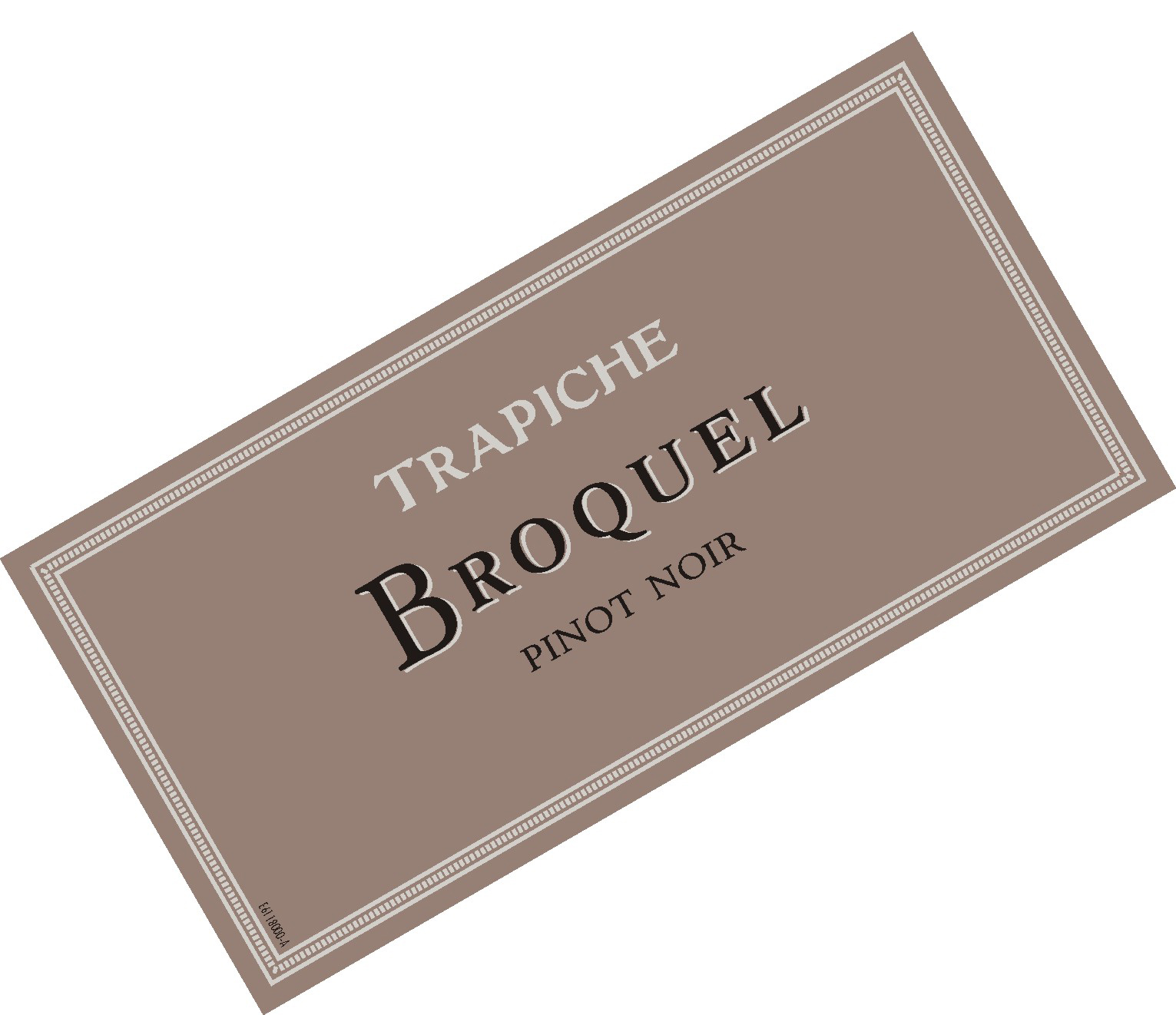 South America has been coming on strong with Pinot Noir. It’s perhaps the most fickle of all red varieties. Where it’s grown and how it’s treated after that is often the source of great debate. When Pinot Noir is well made it can inspire great acclaim and adulation.
South America has been coming on strong with Pinot Noir. It’s perhaps the most fickle of all red varieties. Where it’s grown and how it’s treated after that is often the source of great debate. When Pinot Noir is well made it can inspire great acclaim and adulation. 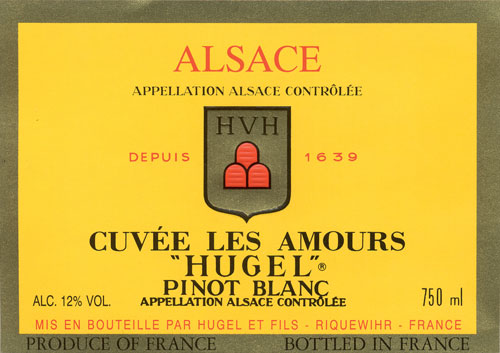 Pinot Blanc is one of those grape varieties that often enough confuses those unfamiliar with it. Some are unsure what it is and how it varies from Pint Gris for instance. And that’s a fair enough question since it is a genetic derivative of Pinot Gris. Taste-wise however there can be a wide gulf. While there are certainly a few other notable regions that have traditionally grown Pinot Blanc, Alsace is without question the area it’s most associated with. Today I’ll look at a current release of a Pinot Blanc from
Pinot Blanc is one of those grape varieties that often enough confuses those unfamiliar with it. Some are unsure what it is and how it varies from Pint Gris for instance. And that’s a fair enough question since it is a genetic derivative of Pinot Gris. Taste-wise however there can be a wide gulf. While there are certainly a few other notable regions that have traditionally grown Pinot Blanc, Alsace is without question the area it’s most associated with. Today I’ll look at a current release of a Pinot Blanc from 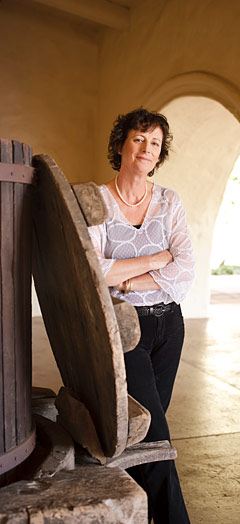 As we’ve grown precipitously as a wine drinking nation over the last couple of decades our choices have also increased. The number of outlets selling wine is way up and the options we have once we go there are in sharp contrast to what was available a number of years ago. The temptation in our culture is also to chase the new hot thing. Sometimes that leaves little room to reconsider or reconnect with something we already love. In this case that something is the
As we’ve grown precipitously as a wine drinking nation over the last couple of decades our choices have also increased. The number of outlets selling wine is way up and the options we have once we go there are in sharp contrast to what was available a number of years ago. The temptation in our culture is also to chase the new hot thing. Sometimes that leaves little room to reconsider or reconnect with something we already love. In this case that something is the 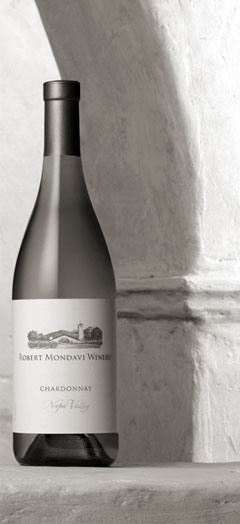 The event took place at
The event took place at 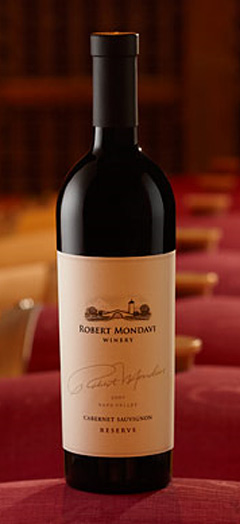 The Robert Mondavi Winery 2007 Cabernet Sauvignon was made entirely with fruit from Oakville and 93% of it from To Kalon. This wine is bigger, bolder and a bit brasher today. It has firm tannins that need some time in the bottle or some aeration to soften a bit. The elements which make the 1996 so drinkable today are also there in the 2007. It’s simply loaded with fruit and spice flavors that are accented by the time spent in barrel. Just less than 10,000 cases were produced and it has a suggested retail price of $135. Ultimately, the 2007 has the hallmarks of a wine that promises to be an even more impressive effort than the 1996. The question after purchasing it is if you have patience. It’s very enjoyable now, particularly with full flavored foods. However if you give it 5 or 10 years of proper storage you’ll be rewarded with a slightly mellower, more resolved wine that will just knock your socks off. You really can’t go wrong either way, it depends which experience you prefer.
The Robert Mondavi Winery 2007 Cabernet Sauvignon was made entirely with fruit from Oakville and 93% of it from To Kalon. This wine is bigger, bolder and a bit brasher today. It has firm tannins that need some time in the bottle or some aeration to soften a bit. The elements which make the 1996 so drinkable today are also there in the 2007. It’s simply loaded with fruit and spice flavors that are accented by the time spent in barrel. Just less than 10,000 cases were produced and it has a suggested retail price of $135. Ultimately, the 2007 has the hallmarks of a wine that promises to be an even more impressive effort than the 1996. The question after purchasing it is if you have patience. It’s very enjoyable now, particularly with full flavored foods. However if you give it 5 or 10 years of proper storage you’ll be rewarded with a slightly mellower, more resolved wine that will just knock your socks off. You really can’t go wrong either way, it depends which experience you prefer. Everyone is always on the hunt for values, and these days it seems that’s truer than ever. Argentina is a country that has been providing value driven wines for a long time now. Seemingly at every conceivable price-point there are wines to be had that over deliver on what you spend. When it comes to red varieties, Malbec is a great source of diversity and value. There are a myriad number of Malbec styles and designations from all over Argentina in a wide array of prices. Over the next month or so I’ll be looking at a diverse array of Malbecs. Today I’ll start with a couple that will fit into any wine budget.
First up is the Astica 2010 Malbec. This wine was produced using fruit sourced in the Cuyo region of Argentina. The fruit for this release was hand harvested. This 2010 Malbec has a suggested retail price of $5.99.
Everyone is always on the hunt for values, and these days it seems that’s truer than ever. Argentina is a country that has been providing value driven wines for a long time now. Seemingly at every conceivable price-point there are wines to be had that over deliver on what you spend. When it comes to red varieties, Malbec is a great source of diversity and value. There are a myriad number of Malbec styles and designations from all over Argentina in a wide array of prices. Over the next month or so I’ll be looking at a diverse array of Malbecs. Today I’ll start with a couple that will fit into any wine budget.
First up is the Astica 2010 Malbec. This wine was produced using fruit sourced in the Cuyo region of Argentina. The fruit for this release was hand harvested. This 2010 Malbec has a suggested retail price of $5.99. Today’s second wine is the Falling Star 2009 Malbec. The fruit for this selection was sourced in the Mendoza region. Half of the fruit was fermented at high temperatures while the other half underwent traditional fermentation. This offering is 100% Malbec and has a suggested retail price of $5.99.
Today’s second wine is the Falling Star 2009 Malbec. The fruit for this selection was sourced in the Mendoza region. Half of the fruit was fermented at high temperatures while the other half underwent traditional fermentation. This offering is 100% Malbec and has a suggested retail price of $5.99.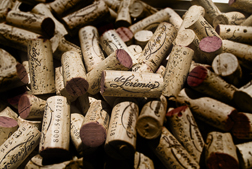 Sangiovese is one of the classic varietals of Italy. It really thrives as a true workhorse grape there forming the backbone of wines in numerous regions throughout the country. Outside of Italy however Sangiovese hasn’t always done as well. Often times growers and producers outside of Italy make the wine in a style that isn’t true to the essence of this wonderful grape. From time to time though I run across an example of Sangiovese, from outside Italy, which captures the true spirit and soul of this legendary grape. Today I’ll look at such an offering from a producer in Alexander Valley.
The
Sangiovese is one of the classic varietals of Italy. It really thrives as a true workhorse grape there forming the backbone of wines in numerous regions throughout the country. Outside of Italy however Sangiovese hasn’t always done as well. Often times growers and producers outside of Italy make the wine in a style that isn’t true to the essence of this wonderful grape. From time to time though I run across an example of Sangiovese, from outside Italy, which captures the true spirit and soul of this legendary grape. Today I’ll look at such an offering from a producer in Alexander Valley.
The  Lately the white varietal out of Argentina that’s been getting a lot of attention is Torrontes. Rightly so in some ways as this is something Argentina offers that no one else really does. Sauvignon Blanc on the other hand is available from many of the world’s great wine making countries. That said there are some excellent and unique expressions of this classic grape coming out of Argentina and they deserve their due. Today I’ll look at one from
Lately the white varietal out of Argentina that’s been getting a lot of attention is Torrontes. Rightly so in some ways as this is something Argentina offers that no one else really does. Sauvignon Blanc on the other hand is available from many of the world’s great wine making countries. That said there are some excellent and unique expressions of this classic grape coming out of Argentina and they deserve their due. Today I’ll look at one from  Lodi California is a name that anyone who drinks Zinfandel will immediately recognize. There are oodles of Zins emanating from that region on store shelves all over the country. There can be so many that it’s hard to pick one without a guide sometimes. When Zinfandel from Lodi is done right it can be an excellent expression of the varietal and thus they’re well worth exploring. Today I’ll look at the current release of Brazin.
The
Lodi California is a name that anyone who drinks Zinfandel will immediately recognize. There are oodles of Zins emanating from that region on store shelves all over the country. There can be so many that it’s hard to pick one without a guide sometimes. When Zinfandel from Lodi is done right it can be an excellent expression of the varietal and thus they’re well worth exploring. Today I’ll look at the current release of Brazin.
The  In the world of Champagne there are a small handful of truly classic names;
In the world of Champagne there are a small handful of truly classic names;  There’s a lot of delicious and fascinating wine coming out of Chile. The varieties available run the gamut. Not the least of them is Carmenere. More and more examples of this varietal are appearing on our shelves and they’re starting to gain some traction with wine lovers. Like a lot of what’s coming out of South America as a whole, and Chile in particular, Carmenere can often represent terrific values. Today I’ll look at one from the Rapel Valley.
The
There’s a lot of delicious and fascinating wine coming out of Chile. The varieties available run the gamut. Not the least of them is Carmenere. More and more examples of this varietal are appearing on our shelves and they’re starting to gain some traction with wine lovers. Like a lot of what’s coming out of South America as a whole, and Chile in particular, Carmenere can often represent terrific values. Today I’ll look at one from the Rapel Valley.
The